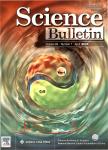Urban structure and the risk of influenza A(H1N1) outbreaks in municipal districts
Urban structure and the risk of influenza A(H1N1) outbreaks in municipal districts作者机构:College of Resources and Environment Science Hunan Normal University Mathematical Computational and Modeling Sciences CenterSchool of Human Evolution and Social Change Arizona State University Division of International Epidemiology and Population StudiesFogarty International Center National Institutes of Health Centre for Environment and Population Health School of Environment Griffith University Hunan Provincial Center for Disease Control and Prevention Department of Respiratory and Critical Care Medicine Beijing Institute of Respiratory Medicine Beijing Chaoyang Hospital Affiliated to Capital Medical University Changsha Municipal Center for Disease Prevention and Control Center for Disease Control and Prevention of Beijing Military Region
出 版 物:《Chinese Science Bulletin》 (科学通报(英文版))
年 卷 期:2014年第59卷第5期
页 面:554-562页
核心收录:
学科分类:1004[医学-公共卫生与预防医学(可授医学、理学学位)] 100401[医学-流行病与卫生统计学] 10[医学]
基 金:supported by the Key Discipline Construction Project in Hunan Province(2008001) the National Natural Science Foundation of China and the Scientific Research Fund of Hunan Provincial Education Department(13A051)
主 题:风险图 流感 甲型 城市结构 Logistic回归分析 logistic回归 城市空间结构 爆发
摘 要:Changsha was one of the most affected areas during the 2009 A(H1N1)influenza pandemic in China.Here,we analyze the spatial–temporal dynamics of the 2009 pandemic across Changsha municipal districts,evaluate the relationship between case incidence and the local urban spatial structure and predict high-risk areas of influenza A(H1N1).We obtained epidemiological data on all cases of influenza A(H1N1)reported across municipal districts in Changsha during period May 2009–December 2010 and data on population density and basic geographic characteristics for 239 primary schools,97 middle schools,347 universities,96 malls and markets,674 business districts and 121 hospitals.Spatial–temporal K functions,proximity models and logistic regression were used to analyze the spatial distribution pattern of influenza A(H1N1)incidence and the association between influenza A(H1N1)cases and spatial risk factors and predict the infection risks.We found that the 2009 influenza A(H1N1)was driven by a transmission wave from the center of the study area to surrounding areas and reported cases increased significantly after September 2009.We also found that the distribution of influenza A(H1N1)cases was associated with population density and the presence of nearest public places,especially universities(OR=10.166).The final predictive risk map based on the multivariate logistic analysis showed high-risk areas concentrated in the center areas of the study area associated with high population density.Our findings support the identification of spatial risk factors and highrisk areas to guide the prioritization of preventive and mitigation efforts against future influenza pandemics.



